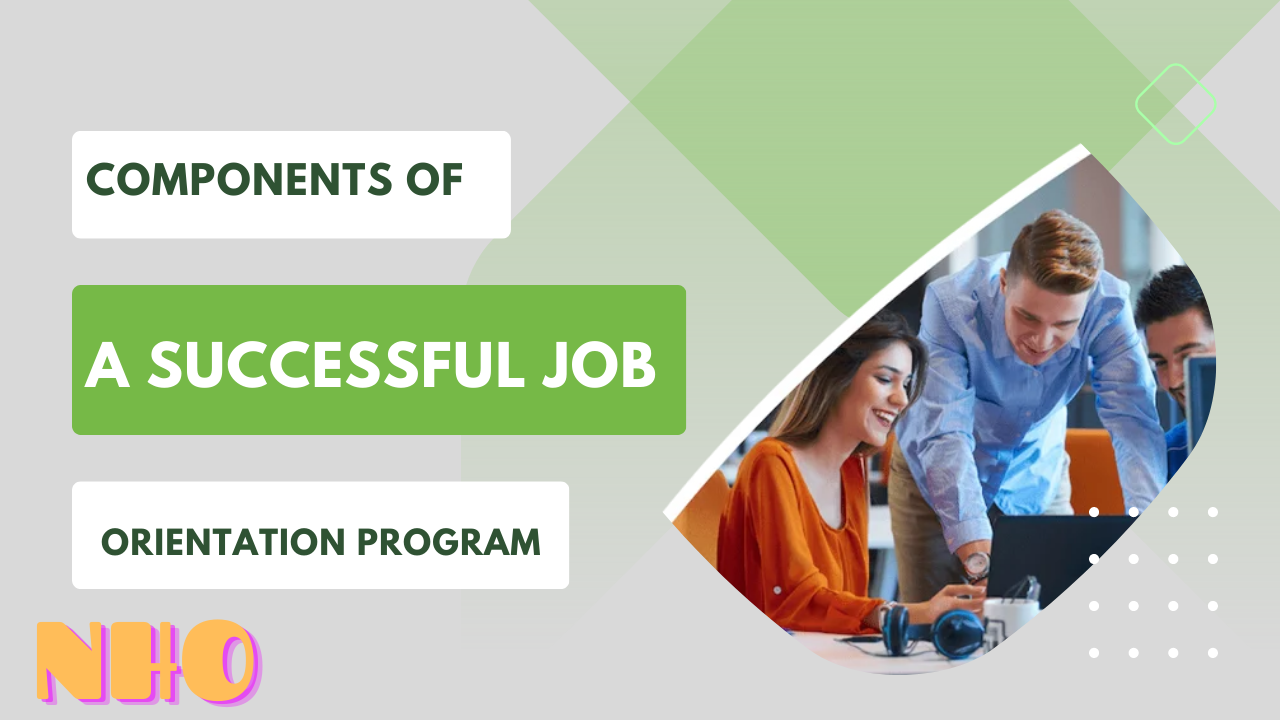New Hire Orientation Blog
Understanding the Importance of Job Orientation
- August 15, 2023
- Posted by: Dev Dev
- Category: Employee Motivation

Importance of Job Orientation! Starting a new job can be both exciting and nerve-wracking. Getting acclimated to a new work environment, understanding the company culture, and learning about job responsibilities is known as job orientation. This article delves into what job orientation entails and why it’s crucial for employees and employers.
Job Orientation
Job orientation, or onboarding or induction, is how new employees are introduced to their roles, the company’s culture, policies, and expectations. It provides a structured way for new hires to transition smoothly into their positions, ensuring they have the necessary knowledge and resources to perform their jobs effectively.
The Purpose of Job Orientation
The primary goal of job orientation is to set employees up for success by giving them a strong foundation to excel in their roles. It aims to minimize the learning curve, reduce confusion, and create a positive first impression of the organization. Job orientation is not limited to conveying information; it’s about making employees feel valued and integrated into the company’s vision and mission.
Different Phases of Job Orientation
 Pre-Employment Orientation
Pre-Employment Orientation
There’s often a pre-employment orientation phase before an employee starts their first day. This might involve completing paperwork, background checks, and other administrative tasks.
First Day Induction
The first day at a new job is crucial. It usually involves a warm welcome, an introduction to colleagues, and an overview of the company’s facilities and policies.
Training and Skill Development
This phase includes training on specific job tasks, company processes, and required skills. It can vary from hands-on training to formal workshops.
Team Integration
Feeling like a part of the team is essential for job satisfaction. This phase might involve team-building exercises and opportunities for new employees to contribute
Benefits of Effective Job Orientation
Reduced Employee Turnover
Employees who feel confident in their roles are likelier to stay with the company long-term.
Increased Job Satisfaction
Proper orientation leads to a greater understanding of expectations, reducing frustration and increasing job satisfaction.
Enhanced Performance
When employees know what’s expected and are trained appropriately, their performance improves.
Faster Adaptation to Company Culture
Effective orientation helps new hires understand the company’s values and work culture more quickly.
Components of a Successful Job Orientation Program
 Company Overview and Values
Company Overview and Values
Sharing the company’s history, mission, and values helps employees align with the organization.
Job Role and Expectations
Clear communication about job roles, responsibilities, and performance expectations is vital.
Introduction to Colleagues and Teams
Building relationships with colleagues fosters a sense of belonging.
Health and Safety Guidelines
Employees must understand safety protocols to ensure a secure work environment.
Challenges in Job Orientation
Information Overload
Presenting too much information at once can overwhelm new employees.
Balancing Formality and Approachability
Finding the right balance between professionalism and approachability is essential.
Time Constraints
Orientation must be comprehensive yet time-efficient.
Tips for Conducting Effective Job Orientation
Personalized Onboarding Plans
Tailored onboarding plans address individual needs and strengths.
Interactive Training Methods
Engaging in training methods, such as hands-on activities, make orientation memorable.
Continuous Feedback Loop
Regular check-ins allow new employees to ask questions and receive guidance.
Mentorship Programs
Pairing new employees with experienced mentors provides valuable support.
Measuring the Effectiveness of Job Orientation
Retention Rates
Low turnover rates indicate successful onboarding.
Employee Feedback
Gathering feedback helps identify areas for improvement.
Performance Metrics
Improved job performance is a direct result of effective orientation.
Common Misconceptions about Job Orientation
It’s Just a One-Day Process
Job orientation is an ongoing process that extends beyond the first day.
Job Orientation is Only for Entry-Level Positions
Employees at all levels benefit from proper onboarding.
Experienced Employees Don’t Need Orientation
Even experienced hires need guidance on company-specific practices.
Conclusion
In conclusion, job orientation is a critical step in an employee’s journey within an organization. It provides the groundwork for success, helping new hires integrate seamlessly and contribute effectively. A well-structured orientation program benefits employees and the company by fostering job satisfaction, reducing turnover, and enhancing overall performance.
FAQs
How long does job orientation usually last?
Job orientation can range from a few days to several weeks, depending on the complexity of the role and the organization’s practices.
Is job orientation the same as training?
While training is part of job orientation, the latter encompasses a broader scope, including company culture and values.
Do all companies have a formal orientation program?
Many companies have some form of orientation, but the extent and structure can vary widely.
Can job orientation be conducted virtually?
Yes, with the rise of remote work, many organizations offer virtual orientation programs.
Is job orientation only for new hires?
While it’s most common for new employees, orientation can also apply to internal transfers or promotions.
1 Comment
Leave a Reply Cancel reply
You must be logged in to post a comment.

[…] into the company’s culture. In this article, we’ll walk you through what happens at a job orientation, ensuring you’re well-prepared and ready to make a positive impression from the […]